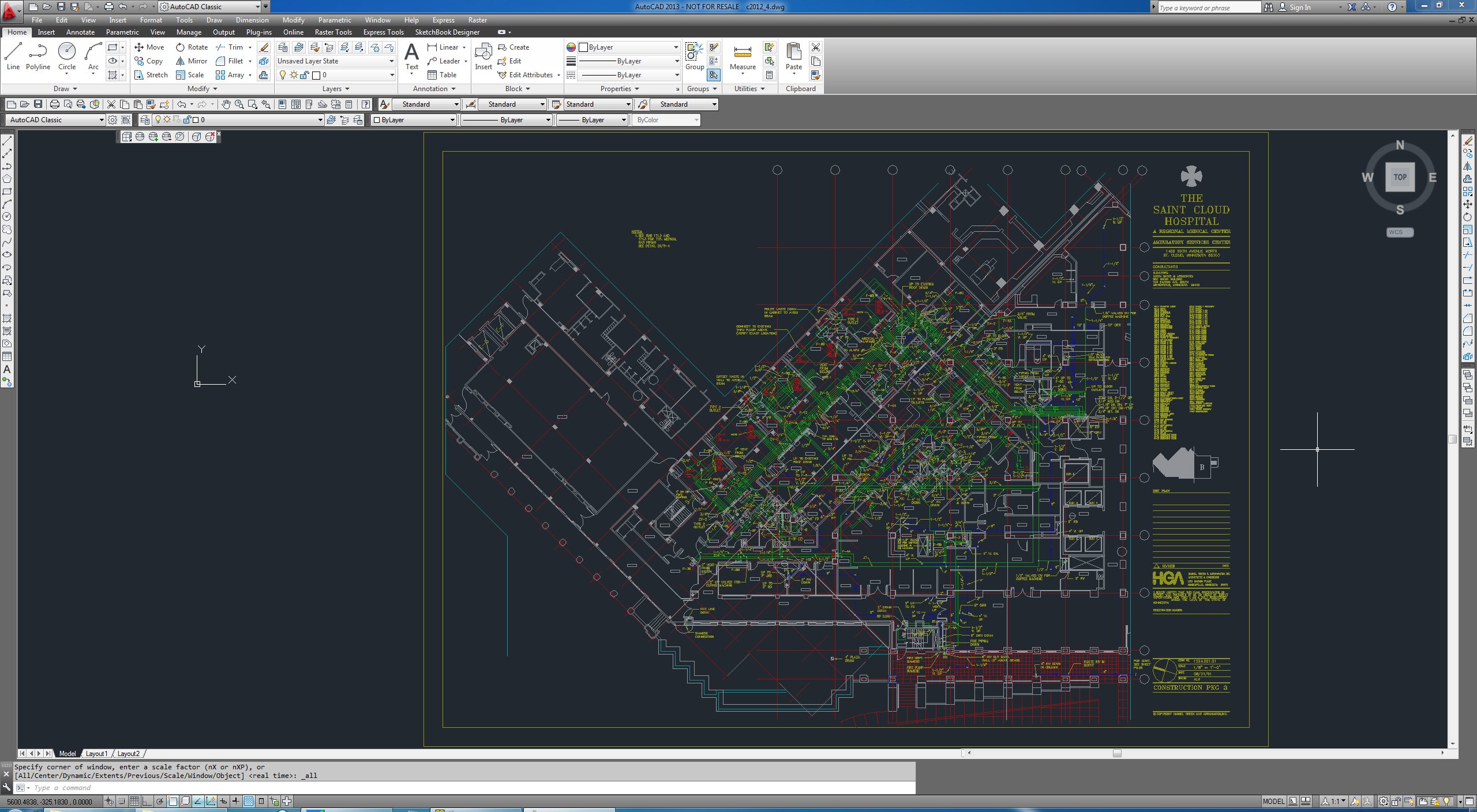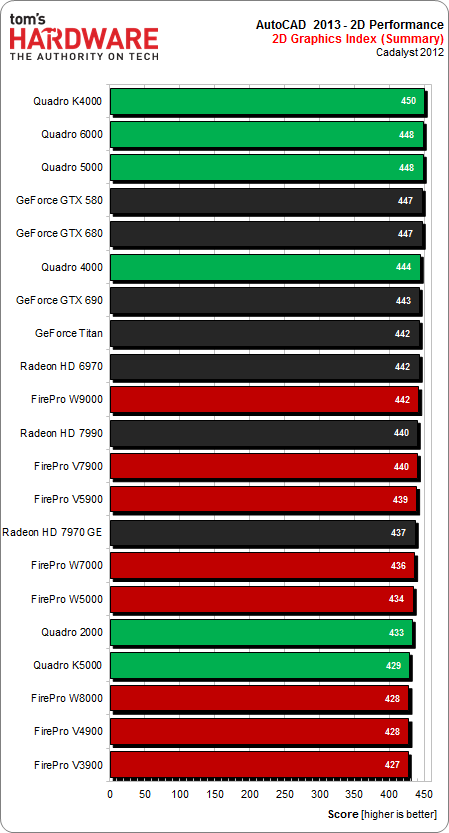Workstation Graphics: 14 FirePro And Quadro Cards
We put 14 professional and seven gaming graphics cards from two generations through a number of workstation, general-purpose computing, and synthetic applications. By the end of our nearly 70 charts, you should know which board is right for your workload.
AutoCAD 2013: 2D Results Overview
Drivers Used
Interestingly, Autodesk has only certified drivers for FirePro cards that were originally released in 2010 and are now two generations old. Nvidia doesn't fare much better, with only the Fermi-based boards up to the Quadro 5000, as well as several older Tesla models, receiving any validation. Of course, even the newer cards run flawlessly with current drivers, since it was the hardware, and thus the cards themselves that were certified. Nonetheless, this patchy and intermittent state of certification on both sides of the aisle is both confusing and irritating for consumers.
| Driver | Nvidia | AMD |
|---|---|---|
| Workstation | 310.90 (Certified) | Catalyst Pro 9.003.3.3 (Not Certified) |
| Gaming | 314.22 | Catalyst 13.3 Beta 3 |
AutoCAD 2013: Overall 2D Performance
We're kicking off testing with the versatile and popular AutoCAD 2013 by Autodesk, first looking at its “2D” performance. The 2D is in quotation marks because AutoCAD 2013 actually uses D3D (DirectX) for its 2D and 3D output. This is doubly interesting because Windows hasn’t had universally-usable hardware acceleration through the kernel-mode driver since Vista, and graphics cards based on unified shader architectures don't have 2D units.
Unfortunately, the hardware implementation and application-specific optimizations for OpenGL are very operating system-dependent, and are stamped out with each change of the Windows driver model. This was one of the main reasons I decided against Windows 8 for this round-up, giving AutoCAD with DirectX a chance. Let’s take a look at the overall results before we start breaking down the individual outcomes.
The only observation that stands out is the lack of any card standing out. Every board demonstrates almost identical performance, meaning that any graphics card you buy, including gaming products, is usable for drawing in 2D. Most of the workstation cards do offer 10-bit color depth, but this is inconsequential for 2D tasks. The need for ECC-capable memory and the protection it offers from data corruption is also questionably in 2D workloads, so long as there aren't any additional compute tasks going on.
Get Tom's Hardware's best news and in-depth reviews, straight to your inbox.
Current page: AutoCAD 2013: 2D Results Overview
Prev Page Benchmark System, Drivers, And Software Next Page AutoCAD 2013: 2D Results
Igor Wallossek wrote a wide variety of hardware articles for Tom's Hardware, with a strong focus on technical analysis and in-depth reviews. His contributions have spanned a broad spectrum of PC components, including GPUs, CPUs, workstations, and PC builds. His insightful articles provide readers with detailed knowledge to make informed decisions in the ever-evolving tech landscape

